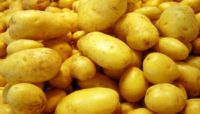WHO on Potassium and Sodium

According to the WHO New Guidance on Dietary Salt and Potassium, which was made available to the Ghana News Agency today, sodium is found naturally in a variety of foods, including milk and cream (approximately 50mg of sodium per 100g) and eggs (approximately 80mg/100g).
It is also found, in much higher amounts, in processed foods, such as bread (approximately 250mg/100g), processed meats like bacon (approximately 1,500mg/100g), snack foods such as pretzels, cheese puffs and popcorn (approximately 1,500mg/100g).
As well as in condiments such as soy sauce (approximately 7,000mg/100g), and bouillon or stock cubes (approximately 20,000mg/100g).
It said potassium-rich foods include: beans and peas (approximately 1,300mg of potassium per 100g), nuts (approximately 600mg/100g), vegetables such as spinach, cabbage and parsley (approximately 550mg/100g) and fruits such as bananas, papayas and dates (approximately 300mg/100g).
It said processing reduces the amount of potassium in many food products; currently, most people consume too much sodium and not enough potassium.
It said public health measures to reduce sodium and increase potassium consumption and thereby decrease the population’s risk of high blood pressure and heart disease can include food and product labelling, consumer education, updating national dietary guidelines, and negotiating with food manufacturers to reduce the amount of salt in processed foods.
The guidelines are an important tool for public health experts and policymakers as they work in their specific country situations to address noncommunicable diseases such as heart disease, stroke, diabetes, cancer and chronic respiratory diseases.
WHO is also updating guidelines on the intake of fats and sugars associated to reduced risk of obesity and noncommunicable diseases.
Looking for a reprint of this article?
From high-res PDFs to custom plaques, order your copy today!






